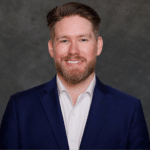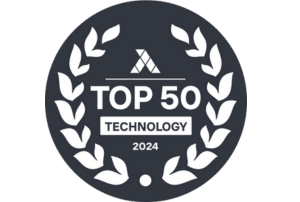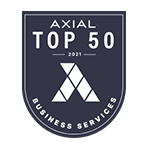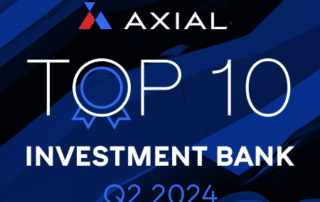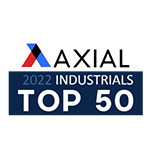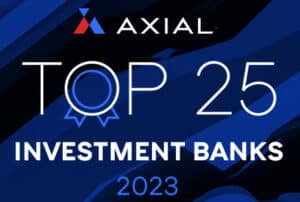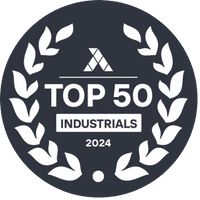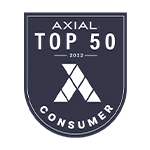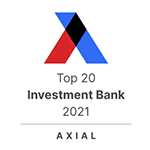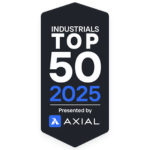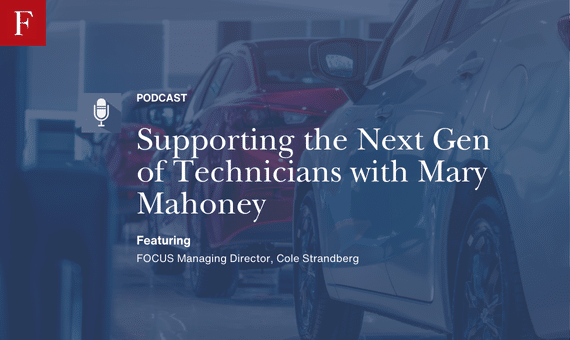
Supporting the Next Gen of Technicians with Mary Mahoney | Talent Shortage & Workforce Development
In this episode, we chat with Mary Mahoney, Vice President, Replacement & Leisure Division at Enterprise Mobility and a key leader in the Collision Engineering Program. Enterprise has been a driving force behind this initiative, which is designed to bridge the technician gap by providing structured, hands-on education and career pathways for aspiring collision repair professionals. We discuss why programs like Collision Engineering are critical to solving the technician shortage, how they’re expanding to make an even greater impact, and what shop owners can do to engage with and benefit from this growing talent pipeline.
Cole Strandberg: You are too kind and I appreciate you and your time. Looking forward to an awesome conversation. I want to start real quick. I gave the audience a little bit of some background about you at the top of the show, but would love for you to introduce yourself in your own words.
Mary Mahoney: Sure. Mary Mahoney I’m a Vice President on what we call our replacement and leisure team here with Enterprise Mobility at our global headquarters. I’ve been with Enterprise for multiple decades working closely with the insurance and collision industry over those years and continue to do that and currently I oversee some of the work we do on our team in addition to this tremendous project that we call Collision Engineering Career alliance. And I think I’m Just getting started after multiple decades.
Cole Strandberg: I love it. Well, a couple of fantastic brand names you mentioned there, certainly your employer in enterprise, and I could go down a lengthy rabbit hole about that in your career. But the thing I want to focus on first today you mentioned is the collision engineering side of the equation. Talk to me about collision engineering. What is it? And what problem, more importantly, perhaps, is it solving?
Mary Mahoney: Yeah, great, great question. And I don’t think it’s new to anybody that there is a massive shortage of collision technicians globally. This is not just a US problem, and it’s been ongoing. I have data from TechForce that says we need well over 110,000 new technicians by 2028 and beyond. Not only that, but the evolution of these vehicles being built by manufacturers are like iPhones on four wheels. So we not only need technicians that can repair vehicles from a collision repair perspective, but we need that next generation that can focus on technology and engineering at the same time. So out of that need, collision engineering was born. And it was born in partnership with the Enterprise Mobility foundation and Rankin Technical College right here in St. Louis. And you’re probably thinking, well, that’s an odd combination. How did that start? Well, it started from Carolyn, who is our CEO of our foundation. Carolyn is the granddaughter of our founder, Jack Taylor. And for those of you that may not realize it, we are privately held, owned and operated family business. In fact, Jack started this business here in St. Louis in a body shop, a Cadillac dealership. Body shop. Anyway, Carolyn came to us, a lot of our executives, probably around 2019, and said, There’s a real problem out there with this shortage. We, we should probably do something about this. What do you think? And I’m like, yes, we absolutely need to do something about this. So she had me go visit Ranken Technical College. And she believed there were key components of their automotive models, their collision models specifically, that could probably help us build a new model to solve this, maybe around the world, around, at least around the US So I’ve never been in a technical college before, so that was a challenge for me right there. I grabbed industry stakeholders, MSOs, independent shops, insurance companies, parts companies, glass companies, everybody I typically work with in the industry. And I said, let’s go visit Ranken for a day and a half. At the end of that time there, we all agreed this is a model, this is a curriculum, this is unique. And I think it’s what we need to try to solve this around the country. I took it back, I built a business plan. We took it back to Carolyn and she invested in us to go test this model for two years. So in 2020, we actually launched the pilot. We were intended to launch it with two schools. We ended up with four schools around the country. And we did it in partnership with collision repair shops, schools and of course industry partners. Here we are today with seven schools and continuing to expand as we move forward.
Cole Strandberg: What a great story and a great evolution to that program. And I want to talk about the curriculum you mentioned and kind of the structure. But before we do, as a brief aside, how cool is it that an organization like Enterprise and the Taylor family themselves. Right. Enterprise is a whole lot more than Collision. But they’re recognizing that problem and taking the initiative to make some big moves to help fix that.
Mary Mahoney: Yeah, thank you for saying that. You’re spot on. I mean, Rankin Technical was a place that Jack Taylor used to spend a lot of time. He loved vehicles, he loved tinkering under the hood of cars. He was a military vet as well. So he built a lot a long term relationship with them that continued to build that program. But we have received business, our business has grown from this industry for over 50 plus years. And the Taylors viewed it as we need to give back and continue to help this industry grow. Not only because, you know, it’s important to us as a mobility company, but it’s critical for every stakeholder in this industry to be involved if we want to ensure the overall health of the automotive industry as we move forward. It’s so important and no one company can do it alone.
Cole Strandberg: That’s it. Rising Tide lifts all boats and it seems like initiatives like this only speak further to it. The industry is coming together and a lot of it’s because of programs just like this. So talk to me about the curriculum. How is Collision engineering different than some of the other programs? Maybe across the country?
Mary Mahoney: Yeah, it’s a, it’s a unique model. It focuses on education and hands on apprenticeship programs. It’s a two year apprenticeship program with an associate’s degree. And the model is eight weeks in the classroom and immediately eight weeks in the shop and you rotate for two straight years and at the end of that year you have a job, 100% employment along with an associate’s degree backed by the Department of Labor and Education. But the curriculum is more of a progressive structure. It’s transitions from basic to advanced levels, meticulously crafted to transition to those advanced levels to keep the quality of that student moving forward. So it’s a benefit to the shop industry driven pieces that comes from including content from ICAR ASE 3M and of course the OEMs with certifications and more are all covered through the program. And so we like to say it’s education driven by industry because the industry knows what we need today. And as we move forward with these evolving vehicles, the apprenticeship is key. That was the piece we believed we were missing is working hands on in the shop.
Cole Strandberg: Very cool. And to your point, what a different industry we’re in today than even five or 10 years ago. These vehicles are totally different than the old way of doing. It doesn’t work anymore.
Mary Mahoney: It doesn’t. It doesn’t. We’ve got to go beyond that traditional vocational level of education or the traditional models of trying to train an employee in the shop. Maybe it worked 35 plus years ago, but it’s not going to work today. As we continue to evolve, we’ve got to continue to educate these students at a higher level with hands on experience. And we’re creating lifelong learning learners as well. That’s kind of how we work with our, with our students in that way.
Cole Strandberg: So no question about it. That’s awesome. And trying to attract this talent, it’s so nice when you have hundreds or thousands of people in this industry able to say you need to come join this industry. It’s life changing. And it really, really is.
Mary Mahoney: It is. And we need to create more awareness around it and outside of our industry maybe as well. And so we’re, we’re trying to focus in that area as well. Heavy recruiting. We did a market study before we started down this path to go who really would be interested in a career like this. And we discovered, oddly enough, we discovered the number one individual interested in this career is female. And a female who’s not right out of high school, but a female who’s been in the work industry for anywhere from six to eight years and is looking for something far more to use their creative talents. The next interest level was, you know, ethnic groups, Asian, Hispanic, African American. The third was veterans and the fourth on the list were high school students. I mean, I don’t even know what I want to do when I grow up so I can see where they’re at when they’re a high school student.
Cole Strandberg: No question. That’s an interesting twist that I have not really heard before, but some good inspiration to maybe think outside the box as we look for the future of our collision repair industry talent pool. Something that you and I did not speak about in our pre show call, but I saw it pop up and make the news was something called the collision Engineering Career alliance, what that announcement entails and what that means.
Mary Mahoney: Yeah. So I took you up to our pilot. Our Pilot launched in 2020. It was to run two years, but thanks to Covid, it ran almost four years. Three for sure. And during that time, we were operating in a pilot environment with foundation and Rankin. And what we learned is that the industry was embracing this concept, the schools were embracing it, and that we needed to create our own entity. And so what we did is we worked with the, with the government and we created our own public 501c3 nonprofit that is officially called Collision Engineering Career Alliance. And that was launched. It took over a year to work through that, and that was launched in early February. So we are our own public nonprofit outside of enterprise. And we want everybody to join us. We can’t do it alone, but we’re excited to move forward with this project and this structure in a more formalized fashion.
Cole Strandberg: Beautiful. And I want to talk about industry folks and companies joining alongside collision engineering and how that works on multiple levels. Before I do, we talked about where you came from and where collision engineering is today. Where do we see collision engineering’s impact? If you were to say, hey, five years from now everything has gone really, really well, like we hoped it would, how do you see that impact playing out on the industry?
Mary Mahoney: Yeah, I, I have a vision that we continue to expand schools around the country. We only have six schools today. We would love to see 50 schools long term, 55 schools actually. It’s kind of every market that we operate long term. But more importantly that we see the industry moving along, focusing on building this at a community level. We don’t believe that this is going to be solved at a national level. We believe it needs to be solved at a local level. What that means is with a local school working with the local community, which is collision repair shops, insurance companies, glass companies, enterprise companies in that local market to support those schools and continue to build a pipeline of collision technicians right there in the community where they work and live. And that’s how we believe we’re going to solve this for the long term. It’s not going to happen overnight. But that’s a key ingredient in every market and every community where we operate. So we really, really talk about industry, community and education are the three pillars to make this work.
Cole Strandberg: I love that. And it’s interesting you say that for 120 or so episodes of the collision vision. I don’t think there’s one where in some shape or form, the technician shortage or the talent shortage has not come up. It is the number one topic in the collision repair industry and this series has been super fun to allow us to really focus on that and dive into that. But I do think we. There’s two different challenges and two different types of organizations working to solve this problem. And that’s at the national, the macro level, organizations like I CAR and groups like that of the world who are doing great work. But then there’s the micro level. It’s the local community, the shop, the trade schools working together. And we need both. And so to have this feels like we’re sort of crossing the border here with collision engineering in doing both.
Mary Mahoney: Yeah. Yep. Yeah, we. So to think of a lot of our shops that participate with us today are independent shops. We have some MSOs. Crash Champions is a big participant in our program. I think they have 35 of our students around the country, but independents are big. And how we want to see them get involved is to work with the school, be involved in the school. We have an advisory board on every school that we operate in, it’s Collision Engineering Advisory Board. And they help guide the school and they help guide the curriculum and help work with the students. But also it gives the shop the opportunity to come in and in front of a student body, present who they are present with. Their business is all about and indirectly they’re recruiting. And so we’re seeing a lot of that with the local shops and it’s been very, very effective. But then all of them working with industry standards for education, whether it’s certifications, I car, OEM certifications are big, but all of them working together at that level, but bringing it into their home, where they operate and where they work.
Cole Strandberg: Getting more collision repairs involved in this, obviously a key initiative, something that’s going to be helpful. You mentioned it. Right now, tactically, if you’re a shop owner or an MSO leader listening to this, saying, hey, I want to get involved, how do they go about doing that?
Mary Mahoney: Well, a number of ways. First of all, there’s lots of job fairs out there and they should be participating in job fairs. Another way is to work with the school, as I mentioned, if it’s not one of our schools, find out if they have a collision repair program and get involved there, present to their student base, be a part of their advisory board, work with. There are apprentices out there coming out of our schools. But don’t wait. You want to. You want to jump into those apprentices right away. We look for shops that want to work with us on the apprentice Level. In other words, don’t wait till one of these students graduates. You want them up front. You want them at an early level. You want them at the apprenticeship level. So work with your local colleges, your local high schools, and make sure the community knows who you are and what kind of an employer you are as well.
Cole Strandberg: A couple weeks before the time of this recording, I was at the ICAR national conference and got the chance to meet with a ton of instructors and school leadership. So I know there’s a fair bit of those folks listening to this conversation as well. From a school perspective, in partnering with a school, what do you look for from them?
Mary Mahoney: We look for first. Private or public, nonprofit is what the school needs to be. We look for an associate’s degree level. We look for an automotive program that wants to have a collision repair program are typically the basics that we look for. And then we look for instructors and leaders who really want to make a difference and really grow this industry and support this industry. One of my favorite instructors is Joe. He’s from Metropolitan College in Omaha. He contacted us, and he has a phenomenal school, but he heard about the program, and he contacted us, and he says, I want to be a part of this. I want to join the movement. I go, oh, I didn’t know we had a movement, but okay, join us. He is amazing. Laura, she’s our head instructor from Contra Costa College. She is amazing. Grew up in body shops with her dad and now runs Contra Costa Collision Repair School. And she goes, I want to be above average. We don’t want to be mediocre. We don’t want to move forward. And she was one of our first and one of our most productive schools out there in the early beginning. So they get so energized that the industry cares enough to support them and. And want to make them better. And the schools we have now, we have six of them. They all work together as if they’ve known each other for years, and they haven’t. We meet, we share best practices. We help each other with the challenges. So it’s really a community within a community that we’ve built through this, and we’re just getting started. We’re just getting started.
Cole Strandberg: I believe it. This industry is such a big industry, but it’s a small world, and it’s full of some really good people who I know want to help. So shout out to those schools. Shout out to the instructors who are doing the good stuff every day. It’s where the rubber meets the road, and it’s so incredibly important. Talk to me, a little bit more about from a curriculum perspective. If you are hiring a graduate of Collision Engineering, what should you expect?
Mary Mahoney: Yeah, well, you know what, first of all, I’m going to. I brought a couple of comments from some of the shops that have participated and I want to read those to you because that will just tell you everything right there. But the idea behind the curriculum is that when that student is finished with their apprenticeship and they’re finished with their education, they are a high quality employee that hits the ground running. And that’s what we have seen so far. But in addition to the repair and the technician curriculum, I didn’t mention that. We have a personal and professional program overview to help develop them as individuals. So it’s a holistic approach, if you will. And we’re trying to teach these kids, like kids or any of the students, life skills, social skills, how to communicate and interact in a workplace and navigate through what they’re going through at a successful level. And we do this with the mentor as well. We put them through this training that has really made a difference on what type of employee comes out of this program. We had. I’m going to tell you what Amber Alley says. Amber Alley has a body shop in Northern California and she was one of the very first to join our program. And she’s like, okay. She said, I’ll give it a try. She said not only did she take a chance in this new model during a really challenging time, which is during COVID but she also hired the first student from Contra Costa. A testament to her commitment. She says, I think the program like this is exactly what we need to change the perception of the industry. Her belief that could after alter industry standards, could alter that, but for better has proven true as she continues to employ and support graduates who strive to be better every single day. Tiffany Silva from Accurate Auto Body remarks on the fresh approach on what the program brings. Collision Engineering is a solution we’ve all been looking for. It’s a breath of fresh air bringing technicians who are eager to learn from industry leaders. Tiffany highlights how these students aren’t just filling roles, but they’re actively and excited to to contribute to it. Enhancing the workplace with their enthusiasm and dedication every single day. The most high quality employee I’ve ever had. So those are just a couple of the shops that took a chance with Contra Costa College and took some of our students in as an apprentice. So it’s a commitment from the shop to do this. I mean it’s not an overnight process, but it’s a commitment that fulfills the day to day and then the long term as well. Another. Another shop that I just think has taken it to a whole other level is Crash Champions. So this is an mso. They have their own training program. But yet Matt Ebert, the CEO who started as an apprentice, believes in what we’re doing, and he believes in supporting the industry and also believes there’s not one pathway to solving this, that there’s multiple pathways. So he has supported us. He held a golf tournament for us, raising money, but he has, as I mentioned earlier, he has about 35 of his students throughout shops around the country. So it’s new, it’s evolving. It’s what we need to keep up with what the manufacturers are building, whether it’s EV technology, ADAS equipment, for sure. Autonomous. Autonomous technology is there. None of that’s going away. It’s only going to get greater and greater and we have to be ready for that. So it’s really about building that next generation of skilled, highly motivated, passionate collision repair technicians. That’s why we kind of coined it collision engineering.
Cole Strandberg: I love it. I love it. And it’s just heartening to see a group like this and others getting behind this and realizing the challenge. I know I said it before, but I’ll reiterate it and, and doing something about it. And that is the bulk of the battle. And it’s cool to see the other piece of the battle is from the employer side when it comes time to go ahead and compete for some of this talent that’s coming in from outside the industry. They’re going through the collision engineering program. What advice would you have for shops who want to be in a position to attract the talent? Because a lot of these folks are going to have a lot of different opportunities for themselves.
Mary Mahoney: That’s a really great question and a great point, Cole. Originally, we started this program, we thought we were just going to pick shops in the market and send a student over there. And I was quickly informed by our instructors and our director of the program, like, no, no, no, no, no. You have to let the student pick the shop. So thinking about that and where they want to have their apprenticeship, the shop needs to be involved in the community. The shop needs to be in front of these schools, in front of these students to say, I am a great place to work. Here’s who I am. I would love to employ an apprenticeship program. So get involved. You can’t wait for them to come to you. Additionally, the apprenticeship program pays a minimum wage, if not a little bit higher. We subsidize that level of pay higher than minimum because we believe this will be a quality employee for that shop. So we cover the cost of that. We also cover the cost of helping train the mentor with professional and personal development, which they all seem to really, really benefit from from. So overall, shops just need to know that they’re not coming to them. They’ve got to get out in the market, out in the community, get involved in job fairs, talk to the local colleges or call me, I’ll get them involved.
Cole Strandberg: There we go. And we’re going to make that easy as well. I’ll get some contact info from you before we end this show. And it’s, it’s interesting because you don’t want to make the technician shortage come down to the macro and the supply and demand piece. Right. There’s so much personality and personal goals. We’re all the main character in our own story. So we need to share that. That is something that is attainable here in this industry. But going back to the supply and demand side, it is interesting. The technicians are the ones in demand, not the roles. And for anybody who’s been in this industry long enough, that’s very cyclical and did not used to be the case. So for a lot of the folks hiring now, it’s easy to say, hey, they’re lucky to work here. Well, maybe, but we’re also even luckier to have them.
Mary Mahoney: Yeah. Someone who is so passionate about the industry and works for someone that will continue to help them evolve long term in their career. Which is the other thing we’re trying to teach is this isn’t just a one stop shop, this is a major career. You can be whatever you want in the shop. Maybe you want to own a shop, maybe you want to run a shop, maybe you want to help instruct. There’s just so many, many opportunities. But we’ve got to come together as an industry because it’s not going to happen on its own. It just doesn’t happen. We have to work with industry, with education, with community to shape what we need in, in the near future.
Cole Strandberg: So no question about it. Well, very good. We talk about MSOs, we talk about independence. For me, I think they each kind of have their own challenges when it comes to attracting talent. Beyond getting involved with collision engineering, which is a great first step, what advice would you give to independent shops is where we’ll start who are struggling to recruit and retain new talent. How do you find out why and how to fix it?
Mary Mahoney: Well, that’s a great question. I think some of the things we discovered as we became early involved is that the generation we’re working with today needs to know that the workplace cares about them. And that’s not just a warm and fuzzy. It’s a people centric type of employer that today’s employees are looking for. And they’re also looking for purpose. People centric, purpose driven. There’s nothing more valuable and purpose driven than rebuilding these vehicles to a safe standard, safe and proper standards. So employees are looking for environments, work environments where they feel welcome, where they feel they have a purpose, where they’re mentored, where they will be able to evolve and grow their career and feel comfortable along the way as a team. And some of our early students we’ve gotten, we recruited said they didn’t feel that way in the past. And part of them have said it was because of your program that we stayed in the industry and we felt welcome in the industry. And females especially, we were thrilled. We had over 15 females come through the program and they’re out in the industry working successfully right now. But people focused, purpose driven, an environment where they feel that there’s continued training from that employer and an evolution in their career, career opportunities ahead is what makes the difference. And it’s not that difficult. It’s really very simple key pieces for employers to be aware of. It’s kind of how we run our business. How we run our business today is continuing to educate, train, develop and provide career opportunities and make them feel welcome.
Cole Strandberg: There you go. Well, I guarantee after listening to this, there are a lot of shops out there who are going to be asking, I need to get in touch with Mary. I need to learn more about collision engineering. Where, and I hate to pop quiz you here, but where are your current schools now? AKA what geographies should, should be reaching out for today’s students?
Mary Mahoney: Yeah, well, they could go to our website, beacollisionengineer.com lots of information there. But we’re in the Illinois area, Chicago, Champaign, omaha, here in St. Louis. We, we’re in Contra Costa, Northern California. We’re looking at a school in Southern California. What am I missing? We’re also looking in North Dakota, Minneapolis, really all around the country we are looking. But the six that are up and running are what I mentioned and there’s lots of details on our website that they can see and then people who they can connect to. We have a staff of seven people. John Hildebrand, he is our national program director. He came from Ranken. He helped create this model many years ago and has continued to evolve it and then we have others workforce development directors that are around the country helping work with the shops locally as well as the schools locally. So go to the website, there’s lots of information or you can certainly call or email me. Happy to talk.
Cole Strandberg: Well, how, how cool. It must feel a little bit surreal at this time in the collision engineer life about what’s been accomplished to this point. At the same time, it must also feel both daunting and exciting to think about what the future holds as well. Where do you think collision engineering will be and where do you think workforce development in our industry will be here over the next decade or so?
Mary Mahoney: Yeah, it is crazy to think about. It really is. And honestly we’re just getting started and it’s a long term mission. I know so many would go, but Mary, I need 2,000 technicians today and I go, I can’t help you. We’re focused on the long term, is solving this for good. And that is going to continue to work with the model which is bringing industry, education and community together. Nobody can do this on their own and that’s at a global level. And we need to improve and innovate together. We need to look at different ways of training and teaching. We need to invest in people together, they’re worth it for the long term and build just a better future, all of us together. And so the cars are going to become more complicated. I know the average car on the road today is maybe 10 to 12 years, but that’s going to change and we’ve got to evolve and change with it from an educational perspective. It’s time because what we’ve been doing isn’t working and we need help and we welcome anybody who wants to join us.
Cole Strandberg: Well, you have me ready to run through a brick wall just talking to you and what you guys are building. Super, super exciting. So appreciative of what you’re doing, of what enterprise is doing, what the entire collision engineering team is doing. So really appreciate the hard work and encourage you to keep it up. And please let us know as an industry and continue to let us know what we can be doing to help.
Mary Mahoney: Absolutely we will. We so appreciate all of your interest and your time. Would love for you to spend some time with our students too. You learn more from them than you learn would learn from me. So anytime.
Cole Strandberg: Wonderful, wonderful. Mary, drop that website for us one more time as well as whatever contact information you’d be willing to share with us.
Mary Mahoney: Yep, it’s www.beacollisionengineer.com and then I’m at M. No, I’m not. I’m@mary f.mahoneym.com beautiful.
Cole Strandberg: So I will include those links in the show notes as well as some links to the collision engineering website kind of throughout. Whatever jumps out to me and seems interesting. So we’ll load up those links in the show notes. Mary Mahoney, thank you so much for your time and it was an absolute pleasure getting to chat with you today.
Mary Mahoney: It was a thrill. Cole, I look forward to seeing you soon. Thank you. Appreciate it.
Listen and Follow The Collision Vision.

